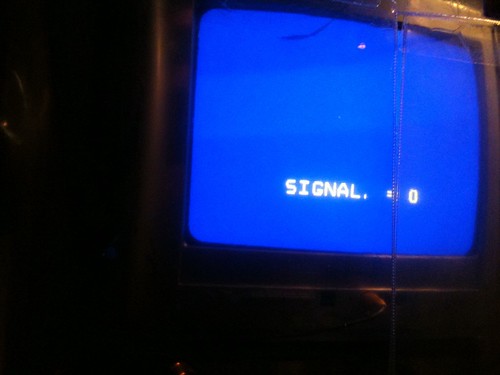 While at the PRSA Digital Impact Conference this week, I sat I in on Pierre-Loic Assayag of Traackr’s presentation on “influence.” Aside from approaching influence as a common sense topic – eschewing single scores for a more well-rounded view of finding influence that is, honestly hard work – he also talked about “signal-to-noise ratio.” Despite SNR being a bit of a hackneyed phrase in social media, my ears still perk up hearing it due to my long history in audio and radio.
While at the PRSA Digital Impact Conference this week, I sat I in on Pierre-Loic Assayag of Traackr’s presentation on “influence.” Aside from approaching influence as a common sense topic – eschewing single scores for a more well-rounded view of finding influence that is, honestly hard work – he also talked about “signal-to-noise ratio.” Despite SNR being a bit of a hackneyed phrase in social media, my ears still perk up hearing it due to my long history in audio and radio.
It also struck me that the traditional SNR social media definition talks about balancing your content, but I realize it’s not so simple; it’s a two-way street.
Before I finish the thought, I’ll step back and review the term’s definition.
First a simple, but still quite technical, definition, from the ever-useful PC Magazine Encyclopedia:
And here is a content publisher’s definition, courtesy of UrbanDictionary (NSFW content throughout this site, by the way):
The ratio of useful information to useless information in any given statement.
From the social media/content marketer perspective, Signal-to-Noise Ratio is typically a rule to follow to limit content about you. Perhaps you have eight tweets/status updates/blog posts about neutral topics, other people or companies, or simply responding to people to every two about you, your company or products. I pull that number out of the air, so figure your own.
But here is where that two-way street comes in. The theme here is simpler than I originally imagined it: what you consider good SNR may not be the same as the audience’s definition. And it’s important to consider both points of view when mapping out content:
1- Define signal and noise both ways (and know what audience/influencers definition is): For example, you may have an idea of a good ratio of “signal” content to self-promotional “noise.” However, your audience may think differently. Depending on their makeup, tolerance for noise may be a lot lower than you anticipated– on the other hand, they may be receptive, and you risk leaving some call-to-action on the table. Feedback from audience will tell you a lot about how you are doing there.
2- Put into practice and adapt: While you do want to consider the audience point of view, you might be best served making a semi-educated decision and seeing what happens. The best part about content is it’s ongoing, not a one-shot campaign. You can always change your ratio as you see what works.
3-Measure and figure out best ratio: I mentioned feedback above, but how you actually measure your program will really make a difference (in other words, here is how you “see what works”). Nothing says your SNR is off like adding more “noise” and seeing your numbers drop.
As I wrote this, I feared I was losing sight of the “two way street” image that came to me during Pierre-Loic’s talk. The truth is that there is only one content stream, and you must serve your audience (whether of a personal blog, a commerce/retail site, a b2b tech forum, or what have you) without giving up your own vision. That’s the intersection.
Make sense? You tell me.

I can’t bring myself to understand people obsessed with finding and structuring content around the optimal SNR.
Everyone’s reason for subscribing to your content is different, and everyone’s definition of “noise” will be different. You can structure the best SNR for the masses, but lose a small number of really important people from your audience in the process.
I think that the way that a lot of people talk about SNR on a really granular, tweet-by-tweet, level is missing the point.
I’d agree with the intersection vision, except that every single person in your audience is their own street, all collecting in the middle. SO maybe a “big messy rotary” is a better description of that intersection.